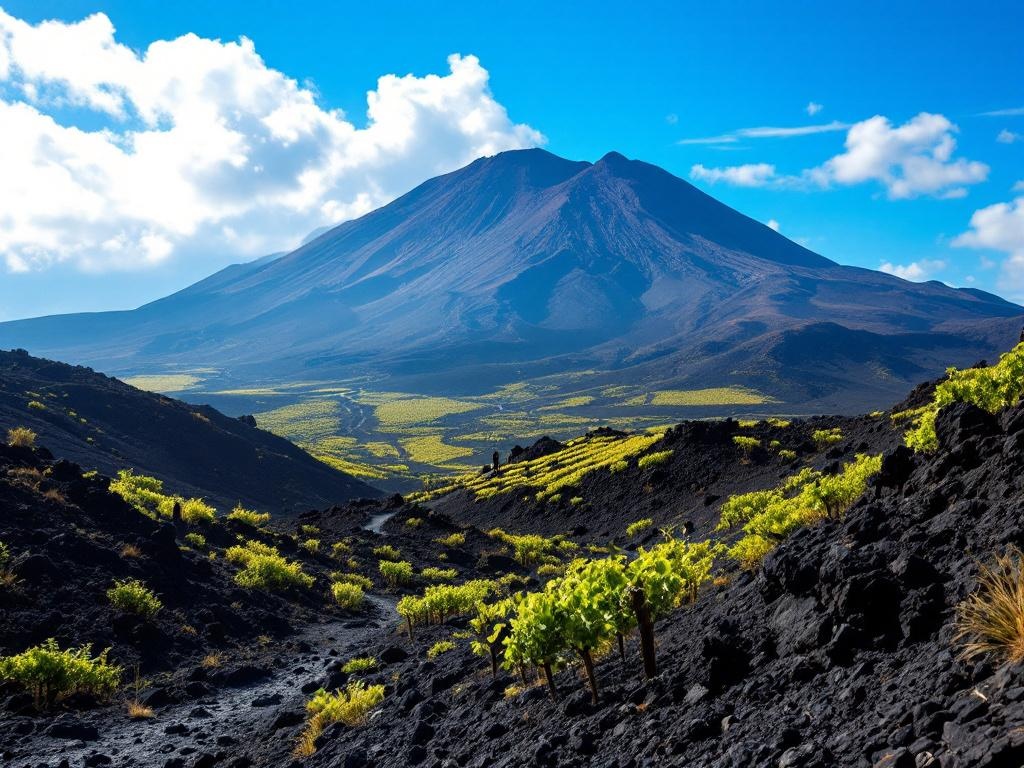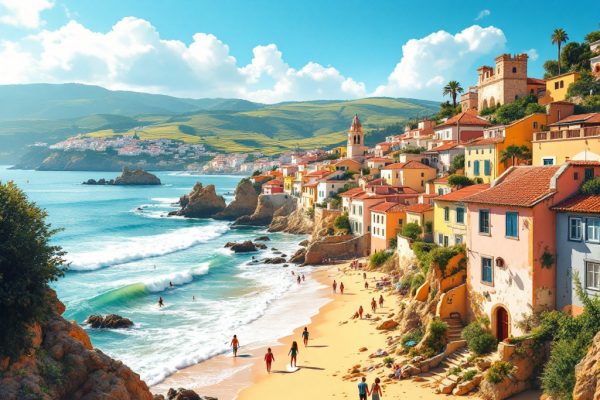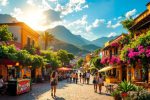Discovering Mount Etna in Sicily
Discover Mount Etna, a UNESCO World Heritage site and Europe’s most active volcano! Explore its rich history, from ancient Greek myths to modern-day eruptions. Witness diverse landscapes, from fiery craters to lush vineyards. Hike scenic trails, savor local wines, and experience the raw power of nature. Plan your Etna adventure today and uncover Sicily’s majestic wonder.
Important information

- Mount Etna is a UNESCO World Heritage site, recognized for its geological importance, diverse ecosystems, and influence on volcanology.
- The volcano significantly shapes Sicilian culture, history, and agriculture, with fertile slopes ideal for vineyards.
- Visitors can enjoy various activities like hiking, jeep tours, wine tasting, skiing, and exploring volcanic caves.
- The best time to visit is during spring (May) or autumn (September-October) for pleasant hiking weather.
- Plan your trip with appropriate clothing, including sturdy hiking boots, layered clothing, and sun protection. Check weather forecasts and volcanic activity reports before your visit.
Introduction to Mount Etna: Sicily’s Majestic Volcano
Mount Etna, one of Europe’s highest and most active volcanoes, dominates Sicily’s east coast. Designated a UNESCO World Heritage site in 2013, this Italian landmark boasts frequent eruptions and rich biodiversity, solidifying its global significance. Etna’s influence shapes Sicily’s landscape, culture, and economy. Before you travel, make sure you have the necessary visa or permits. Use our travel entry requirements checker available on Passport Free Countries.
Geological Importance
Etna’s UNESCO status reflects its undeniable geological importance and profound impact on the surrounding region. Volcanic activity has created unique formations like craters, lava fields, and the Valle del Bove. The fertile volcanic soil supports diverse flora and fauna, providing invaluable research opportunities for volcanologists.
Cultural and Historical Significance
For centuries, Mount Etna has shaped Sicilian history, culture, and agriculture. Revered by the ancient Greeks as the home of Hephaestus, the volcano’s fertile slopes are ideal for vineyards and other crops. While eruptions have impacted local communities, shaping the landscape and influencing traditions, Etna remains a source of wonder, symbolizing Sicily’s power and beauty.
Why Mount Etna is a UNESCO World Heritage Site
Mount Etna, a UNESCO World Heritage Site, is renowned for its exceptional volcanic features, constantly evolving due to ongoing geological processes. Its diverse ecosystems contribute significantly to its ecological importance, and the volcano’s influence on volcanology is globally recognized.
Geological Significance
Eruptions and lava flows have sculpted Etna’s unique landscape, resulting in remarkable geological formations. This dynamic environment provides valuable insights into volcanic processes.
Ecological Importance
Beyond the volcanic activity, a rich tapestry of plant and animal life flourishes, contributing to Etna’s extraordinary biodiversity. This delicate ecosystem thrives amidst the challenging volcanic terrain.
Significance of Mount Etna in Sicilian History and Landscape
Mount Etna’s eruptions have enriched Sicilian agriculture by creating fertile volcanic soil, ideal for cultivating grapes. The volcano’s dramatic slopes and verdant foothills shape the island’s unique landscape and support diverse ecosystems. Furthermore, Etna has profoundly influenced Sicilian culture, inspiring myths, legends, festivals, and local traditions. The volcano continues to evoke both awe and reverence among the Sicilian people.
Historical and Cultural Aspects of Mount Etna
Mount Etna’s eruptions have dramatically shaped the Sicilian landscape, creating incredibly fertile volcanic soil ideal for cultivating grapes. This rich soil contributes significantly to the region’s renowned wine production. However, this power comes at a cost. Eruptions have also devastated local communities and infrastructure.
The Valle del Bove, a vast volcanic depression, serves as a stark reminder of Etna’s destructive potential.
The ancient Greeks wove their own myths around Etna, believing it to be the home of Hephaestus, their god of fire. Some stories claimed the volcano was his forge, while others described it as a prison for the giant Typhon.
Etna’s presence looms large in local folklore, highlighting its profound cultural significance to Sicilians, who even hold festivals and celebrations in its honor. The volcano remains a potent cultural symbol to this day.
Rich History of Eruptions
Mount Etna’s frequent eruptions dramatically reshape the Sicilian landscape and impact nearby communities. These eruptions offer valuable data for geological study. The fertile volcanic soil enriches local agriculture. Etna’s eruptions have also permeated local culture, becoming ingrained in traditions and folklore. Its influence is profound.
Legends and Myths Surrounding Mount Etna
Mount Etna, famed as the workshop of Hephaestus, the Greek god of fire, evokes images of the deity crafting wonders amidst volcanic flames. Legend also places the monstrous Typhon, imprisoned by Zeus, beneath the mountain, his fiery breath erupting from the summit. Yet, alongside these tales of power, local folklore whispers of benevolent spirits dwelling on Etna’s slopes, safeguarding the surrounding lands. This duality makes Etna a place of both awe-inspiring might and watchful protection.
Natural Wonders of Mount Etna
Mount Etna is a biodiversity hotspot, teeming with life uniquely suited to its volcanic environment. Lower slopes are covered in familiar Mediterranean vegetation, including oak and pine forests. Ascending higher, the landscape shifts to alpine flora. Etna’s fauna is just as varied, home to creatures like the Etna salamander and Etna deer. Above, birds of prey such as peregrine falcons and golden eagles dominate the sky.
Planning Your Visit to Mount Etna
Planning a Mount Etna adventure? Spring and autumn offer the ideal climate for exploration. Reaching the volcano is easy, with convenient access from Catania, Taormina, or Messina. Transportation options include buses, private cars, and guided tours. The AST bus provides direct routes from Catania, while Interbus serves Taormina and Messina. For a more personalized journey, consider driving yourself.
Exploring Mount Etna: Activities and Tours
Explore Mount Etna with guided hikes suited for all fitness levels. Discover craters, lava formations, and stunning volcanic landscapes as expert guides share the volcano’s fascinating geology and history.
Practical Information for Visitors
Planning Your Mount Etna Adventure: A Year-Round GuideMount Etna offers exciting adventures throughout the year. Winter transforms the volcano into a skier’s paradise, while summer invites hikers to explore its diverse trails. Before embarking on your Etna adventure, consider these essential tips:














